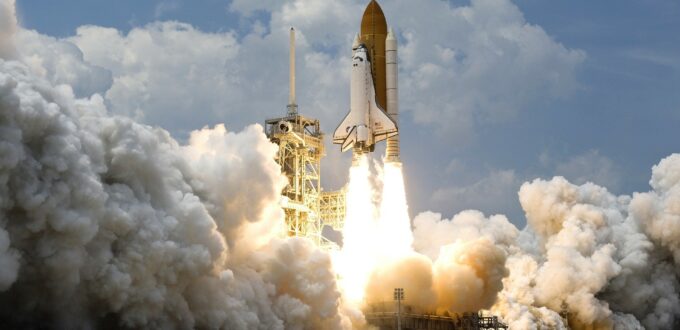A new study connects the increase in the launch of the rocket to the high Noctilucent clouds in the Earth’s atmosphere, increasing the frequency of rare cloud formation events that can occur naturally on the contrary. (NoCtilucent, or “Night-Shining”, depicting thin and thin blue cloud clouds in Mesosphere.)
While new research shows that increasing launching from private companies such as Spacex improves the appearance of clouds, how these rockets are related to other cloud -forming factors such as climate change not quantified in this study.
Space traffic plays an important role in the formation and variation of the clouds, “Michael Stevens, an atmospheric researcher at the Navy Research Laboratory, said in the release of NASA (opened in the new tab) July 21.
Most of our planetary clouds are formed in the layer of the flawed Earth’s atmosphere closest to our planet’s surface, troposphere, which is located between 1.2 miles (1.9 kilometers) and 11.4 miles (18 km) above the earth. Conversely, Noctilucent clouds are in the third layer, mesosphere, in the heaven-high 47 to 53 miles up (76 to 85 km). No other clouds are formed so high on earth.
In general, noctilucent clouds naturally form this method: Like the atmospheric layer that is closer to the surface of the earth, this tends to cool the mesosphere. As a result, water vapor moves to the upper atmosphere, where water crystals condense and form noctilucen clouds.
Materials for Noctilucent clouds are similar to other types, according to the UK Met Office (opened in a new tab), because they need water vapor, dust and very low temperatures. Conditions, however, are different between the atmospheric layers and this makes the study of complex nochilucent clouds.
Aeronomic Ice in NASA in the Mesosphere (AIM) satellite data collected between 2007 and 2021 shows that the launch that occurred between 11 nights. and 10 in the morning. Local time leads to encouragement in the Noctilucent clouds found between 56 and 60 degrees north latitude, far from the usual cloud area near the poles.
AIM data is framed as a key to tell scientists how many NoCtilucent clouds are formed naturally and how much arose because of human impacts such as this launch. Already, scientists have found correlations in the launch and shiny clouds: “The more morning launch, more and more Mid-Latitude Noctilucent clouds appear,” NASA officials wrote in the same statement.
Previous studies, NASA’s statement said, showing that the shuttle of agencies release sufficient water vapor during the launch to make Noctilucent clouds near the poles. However, since the inter -pick -up program ended in 2011, the launch of space has greatly increased due to more commercial activity, removing more high water vapor in the atmosphere.
This new study also found that the wind of the north of the journey was stronger during the morning launch, the potential for lofting exhaust from the frequent launch of Florida or California to the pole.
Other data consulted for this study did not find a correlation between Noctilucent clouds in connection with the solar cycle, showing that changes in solar radiation could not explain the annual frequency variations in cloud appearance.
“This study shows that space traffic, even after the launch of the space shuttle was stopped, controlling the variability
A study (opened in the new tab) based on research was published May 2 on earth and space science; NASA highlighted the work in a statement (opened in the new tab) published July 21.


No Comments Yet